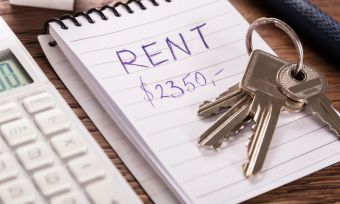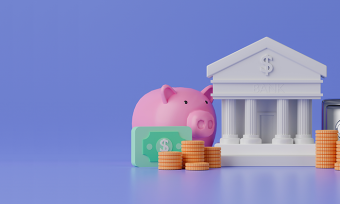What is an emergency fund?
An emergency fund is a financial reserve set aside for unexpected or urgent expenses that may arise. Emergency funds serve as a safety net, to protect you and your family from financial hardship should the worst happen. Having an emergency fund can give you peace of mind and ensure you don’t need to resort to high-interest loans, credit cards or borrowing from friends and family.
Why is it important to have emergency funds?
Having an emergency fund is important for several reasons:
- Financial security. Life is unpredictable, and unexpected emergencies can happen at any time. An emergency fund can provide financial security and stability during a crisis.
- Avoiding debt. Without an emergency fund, people often resort to borrowing money through credit cards or loans when faced with unexpected expenses. These debts can carry high-interest rates, making it harder to pay off and leading to a cycle of debt.
- Peace of mind. Knowing that you have a financial buffer in the form of an emergency fund can ease stress and anxiety.
- Flexibility. With an emergency fund, you have more flexibility and independence in making decisions. For example, it provides you with the option to leave a job that is causing stress or to take time off to handle personal matters without worrying about immediate financial consequences.
- Opportunity for investments. Having an emergency fund allows you to invest with confidence. When you have cash reserves for emergencies, you can allocate other funds for long-term investments that may offer higher returns without the fear of needing to sell investments during a downturn to cover urgent expenses.
- Buffer during income fluctuations. If your income varies or you are self-employed, an emergency fund can help you navigate through lean periods and ensures you can meet you financial obligations.
Emergency funds are an important part of preparing for the unknown, for example:
- Medical emergencies
- Job loss
- Car repairs
- Home repairs
- Legal fees
- Urgent travel
- Home or rent payments
- Major appliance replacement
- Pet emergencies
- Emergency relocation
How much should I have in my emergency fund?
The goal of an emergency fund is to have enough funds to handle unforeseen events without significantly impacting your financial stability. That said, the general rule of thumb is to have three to six months’ worth of cover for essential living expenses.
However, this isn’t a realistic goal for many. The specific coverage you need depends on your income, expenses, lifestyle and financial goals.
If you’re just starting, setting a smaller initial goal, like one month’s worth of expenses and gradually building it up to the recommended amount can be a practical approach.
How do I build an emergency fund?
Building an emergency fund takes discipline and consistent effort. Here are some steps you can take to build an emergency fund:
- Set a target amount. Decide how much money you want to put aside for emergencies. As mentioned earlier, three to six months’ worth of expenses is recommended, but isn’t doable for some. Set a realistic target based on your individual circumstances.
- Create a budget. Create a detailed budget to track your income and expenses. This will help you identify areas where you can cut back on non-essential spending and redirect that money towards your emergency funds.
- Automate savings. Set up an automatic transfer from your everyday account to a separate savings account dedicated to the emergency fund. Automating savings makes it easier to stay consistent and prevents you from spending the money accidently. Use Canstar’s savings account selector to view a range of savings account products.
- Save windfalls and bonuses. Whenever you receive unexpected money, such as a tax refund, work bonus or gift, consider putting some of it into your emergency fund.
- Be patient. Building an emergency fund takes time, especially if you are starting from scratch. Consistent contributions, no matter how small, add up over time.
Where should I keep my emergency funds?
Keeping your emergency funds in a savings account might sound like the obvious option – they’re safe, easy to access and usually don’t have restrictions on withdrawals. However, they typically have lower interest rates than other options. Here are some alternative account options that can help make your saving work harder for you. And it’s worth noting that whatever interest you do earn, be it from a savings account or a term deposit, will be liable for tax:
Mortgage offset account
A mortgage offset account is an account linked to your mortgage. The money you keep in the offset account is deducted from balance of your home loan, reducing the loan amount that you’re charged interest on.
As mortgage rates are always higher than the interest rates offered on savings and term deposit accounts, this will save you money as you save! Plus, you retain the flexibility to withdraw the funds without penalty in case of an emergency.
Term deposit
Term deposits are a type of low-risk savings investment offered by banks or financial institutions. They allows individuals to deposit a set amount of money for a fixed period, during which time the money accrues interest. The amount invested, plus the interest are paid back to the account holder when the fixed term expires. The term length can range anywhere from 30 days to five years.
Storing your emergency funds in a term deposit makes your money work for you, meaning that your emergency funds will be higher once the term has ended. However, a downside to term deposits is that they are for a fixed-term, meaning you cannot easily access your funds whenever you like, and there can be financial penalties attached to early withdrawals.
What type of account you use to store your emergency funds depends on your own financial needs. Take into consideration your personal circumstances, the returns you expect and how accessible your funds are, should you need them.
But, ultimately, whether you keep your money in a savings account, a regular bank account or a term deposit, have some rainy day money set aside can help alleviate, at least, some financial worry, should storm clouds unexpectedly appear on the horizon.
About the author of this page
This report was written by Canstar Content Producer, Caitlin Bingham. Caitlin is an experienced writer whose passion for creativity led her to study communication and journalism. She began her career freelancing as a content writer, before joining the Canstar team.
You can like us on Facebook and get social, or sign up to receive more news like this straight to your inbox.
By subscribing you agree to the Canstar Privacy Policy





Share this article